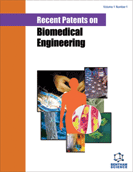Abstract
One current approach to the development of implantable drug/protein delivery systems utilizes a technique to produce electrospun fibrous structures, which have inherently high surface area to volume ratios, high interconnectivity, and structural morphologies similar to the extracellular matrix (ECM) of native tissues. The electrospinning technique is able to incorporate bioactive molecules into the fibers of these constructs to allow controlled release of the molecules over time. Thus, many synthetic polymers, natural materials, and their composites have been widely investigated as delivery vehicles for implantable drug/protein delivery systems. Recent patents for implantable drug/protein delivery systems fabricated using electrospinning technology, especially those designed for use in wound healing applications, coatings for medical devices, and tissue engineered scaffolds are summarized here. In addition, methods of reducing or eliminating the damaging effects of the organic solvents used in traditional electrospinning on the bioactivity of the encapsulated bioactive molecules are underlined, and these include blend electrospinning, emulsion electrospinning, coaxial electrospinning, and surface immobilization. In vitro cellular interactions of these electrospun fibers and clinically relevant animal experiments focusing on in vivo biocompatibility evaluations are further required for successful clinical translation.
Keywords: Electrospinning, drug delivery system, medical device, scaffold, tissue engineering
 15
15

